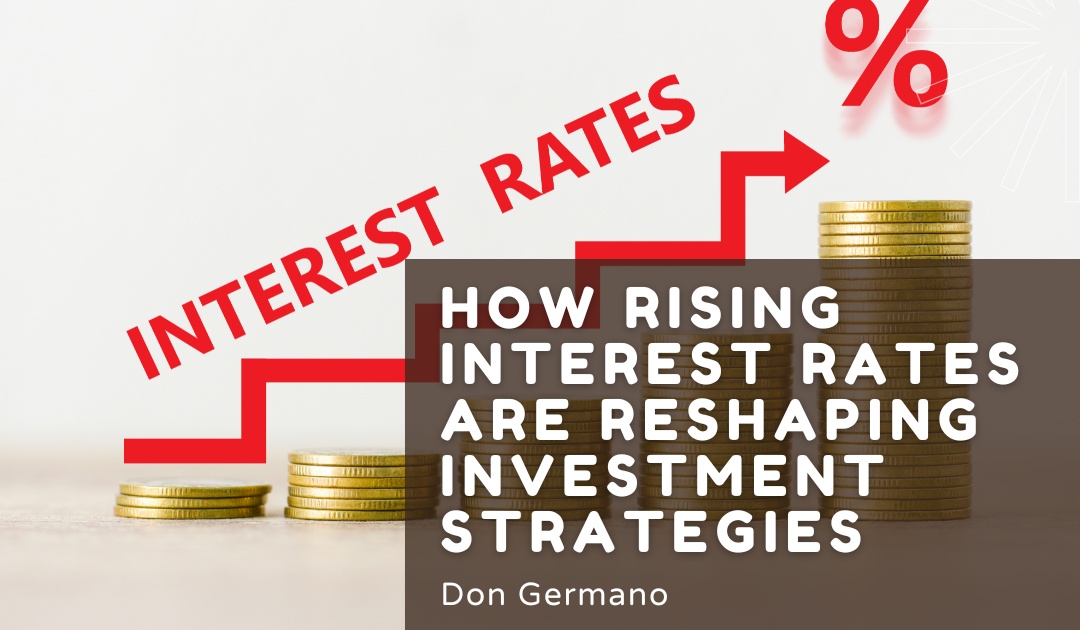Rising interest rates are a game changer for investors. After more than a decade of historically low rates, the global financial landscape has shifted dramatically. Central banks, particularly the Federal Reserve, have raised interest rates to combat inflation and stabilize the economy. This shift is significantly influencing how investors approach their portfolios, making it necessary to rethink strategies that once thrived in a low-rate environment. The impact of rising interest rates is felt across asset classes, from equities and bonds to real estate and alternative investments.
Higher interest rates directly affect bond prices. As rates go up, the price of existing bonds declines because their fixed interest payments become less attractive compared to newer bonds offering higher yields. This inverse relationship can lead to capital losses for investors holding long-duration bonds. As a result, many investors are adjusting their bond portfolios by favoring shorter-duration bonds, which are less sensitive to rate changes and offer the opportunity to reinvest at higher rates more frequently. Treasury Inflation-Protected Securities (TIPS) and floating-rate bonds are also gaining popularity as investors look for ways to preserve capital while benefiting from increasing yields.
In the equity markets, rising interest rates can create headwinds, especially for growth stocks. Growth companies often rely on future earnings potential, and higher rates reduce the present value of those future cash flows. Technology stocks, in particular, have been vulnerable during rate hikes due to their high valuations and dependence on long-term growth projections. On the other hand, value stocks—such as those in sectors like energy, industrials, and financials—tend to perform better in a rising rate environment. These companies often have strong current earnings and benefit from cyclical economic growth, which can offset the drag from higher borrowing costs.
Dividend-paying stocks are also seeing renewed interest. As interest rates climb, fixed-income alternatives become more attractive, but companies with stable dividends offer a combination of income and growth potential. Investors are increasingly seeking out dividend aristocrats—companies with a long history of raising dividends—as a hedge against inflation and a source of reliable returns. These companies are generally financially healthy and can withstand economic downturns, making them a solid addition to a diversified portfolio in uncertain times.
Real estate investment strategies are evolving as well. Rising interest rates lead to higher mortgage costs, which can cool housing demand and impact property values. However, in the commercial real estate space, certain sectors like industrial properties and data centers may remain resilient due to long-term structural demand. Real Estate Investment Trusts (REITs) are under pressure, particularly those with high debt levels or exposure to interest rate-sensitive sectors like office space and retail. Investors are becoming more selective, focusing on REITs with strong balance sheets, high occupancy rates, and properties in high-demand locations.
Cash and cash-equivalents, which were largely ignored during years of low interest rates, are now regaining their appeal. With savings accounts, money market funds, and certificates of deposit offering higher returns, investors are more willing to hold cash as part of their strategy. This provides flexibility to respond quickly to market opportunities and reduces exposure to volatile asset classes. The return of meaningful yields on cash is also prompting some investors to rebalance their portfolios and maintain greater liquidity.
Alternative investments, including private equity, hedge funds, and commodities, are becoming more prominent as investors seek to diversify and hedge against rising volatility. Commodities like gold and oil have traditionally been seen as inflation hedges, and they can play a strategic role when interest rates rise in response to inflationary pressures. Hedge funds with strategies designed to capitalize on macroeconomic trends, such as global macro or long/short equity, may offer uncorrelated returns and help manage risk.
In a higher-rate environment, the cost of capital increases, impacting corporate borrowing, consumer spending, and economic growth. This environment favors quality investments—companies with strong balance sheets, low debt, and consistent cash flow generation. Investors are becoming more risk-aware and are conducting deeper fundamental analysis to identify resilient opportunities. Additionally, diversification across asset classes, sectors, and geographies remains a cornerstone of sound investment strategy.
Financial advisors and individual investors alike are reassessing their goals, time horizons, and risk tolerance in response to the new interest rate reality. Strategic asset allocation is evolving, with greater emphasis on income generation, capital preservation, and inflation protection. Rising interest rates are not just a challenge—they also present opportunities for thoughtful investors to reposition their portfolios for long-term success. By adapting to these changes with discipline and insight, investors can navigate the shifting economic landscape with greater confidence.

